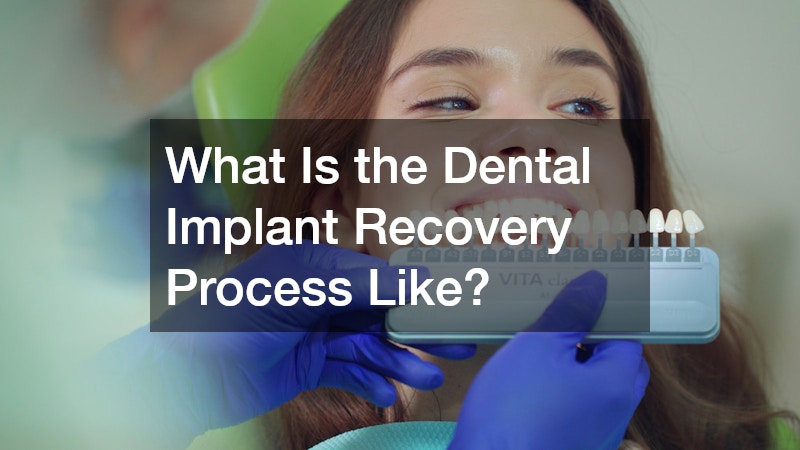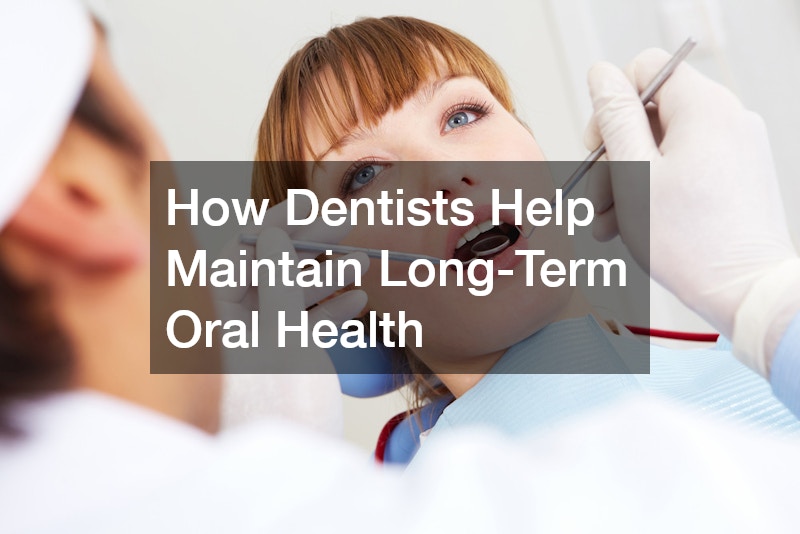Dental implants have revolutionised restorative dentistry by offering a permanent solution for missing teeth. Unlike dentures or bridges, implants provide a strong foundation that mimics natural tooth roots, ensuring stability and longevity. While the procedure itself is highly effective, patients often have questions about the recovery process.
Understanding what to expect after the surgery helps individuals prepare both physically and mentally for a smooth and successful healing journey.
Initial Recovery After Surgery
Immediately following a dental implant procedure, it’s normal to experience some swelling, minor bleeding and discomfort at the surgical site. These symptoms typically peak within the first 48 hours and gradually subside over the following days. Your dentist may recommend pain relief medications, antibiotics to prevent infection and a soft food diet to avoid disturbing the healing area.
Rest plays a crucial role during this early phase. Activities that raise blood pressure or cause physical strain should be limited to avoid exacerbating swelling or interfering with clot formation. Applying an ice pack to the cheek can help manage inflammation during the first 24 hours. It’s also essential to avoid smoking and alcohol consumption, as these habits can impede healing and increase the risk of implant failure.
The Healing Timeline
Recovery from a dental implant procedure varies depending on the individual’s health, the number of implants placed and whether additional treatments like bone grafting were performed. On average, initial healing takes one to two weeks. During this period, soft tissue around the implant site begins to close and inflammation gradually reduces.
However, full recovery extends beyond this short-term healing. The process of osseointegration—where the implant fuses with the jawbone—can take anywhere from three to six months. This biological process is critical to the implant’s success, as it ensures the artificial tooth root becomes securely embedded in the bone. Regular check-ups during this time allow the dentist to monitor progress and address any potential complications early.
Managing Discomfort & Complications
Discomfort during the recovery period is usually manageable with over-the-counter medications or prescriptions provided by your dentist. It’s common to feel some tenderness or experience pressure around the implant site for a few days. If pain worsens or new symptoms such as excessive swelling, pus or fever occur, it may signal infection and should be evaluated promptly.
One of the most important aspects of the dental implant recovery process is adhering to proper oral hygiene. Keeping the area clean without irritating it is key. Gentle rinsing with a saline solution or an antimicrobial mouthwash, as advised by your dentist, can help reduce bacterial build-up while protecting healing tissues.
Potential complications, though rare, can include implant loosening, nerve damage or delayed healing. These issues are more likely to arise if post-operative instructions are not followed or if the patient has underlying health conditions such as diabetes or gum disease. Open communication with your dental provider is essential throughout the recovery to ensure optimal outcomes.
Diet & Lifestyle Considerations
Your diet during recovery plays a significant role in healing efficiency. For the first few days, it’s recommended to consume soft foods such as yoghurt, smoothies, soups and mashed vegetables. These foods minimise pressure on the surgical site while still providing necessary nutrients. As healing progresses, patients can gradually reintroduce firmer foods, always ensuring they chew on the side opposite the implant if advised.
Staying well-hydrated and avoiding hard, crunchy or sticky foods helps prevent irritation or injury to the implant site. Long-term, adopting a healthy diet rich in calcium and vitamin D can support bone strength and overall oral health.
For those who smoke, quitting is strongly advised both before and after the dental implant procedure. Smoking significantly impairs blood flow to the gums and bones, slowing healing and increasing the risk of implant failure. Patients who commit to positive lifestyle changes generally experience better surgical outcomes and longer-lasting results.
Long-Term Care & Maintenance
Once the implant has successfully integrated and the final crown is placed, patients often resume their usual routines. However, long-term success relies heavily on maintenance. Although the implant itself is not susceptible to decay, the surrounding gum and bone can still be affected by plaque and bacteria.
Routine oral hygiene practices—brushing twice daily, flossing carefully around the implant and using dentist-recommended tools—are essential. Regular dental check-ups and professional cleanings ensure any issues are detected early and that the implant remains healthy and stable.
Dental implant recovery is not only a physical healing process but also an opportunity to reinforce good oral habits that can last a lifetime. Patients who invest in consistent care and maintain regular follow-ups with their dental team are more likely to enjoy the full benefits of their implant for many years.
A Smooth Recovery Leads to Long-Lasting Results
The dental implant recovery process involves several stages, beginning with initial healing and extending into long-term care. While the timeline can vary, most patients experience significant improvement within weeks and full integration over several months. With proper post-operative care, attention to hygiene and healthy lifestyle choices, recovery is typically straightforward and successful.
By understanding what to expect during this period, individuals can take an active role in ensuring their dental implant heals correctly. The reward is a strong, natural-looking replacement that restores function, confidence and quality of life.
.




